
| |
It is in the composition of this architectural terminus that the fantasy of the innovator architect is expressed. A succession of curves follow one on the other, in harmony with the rotundas that mark the anchor points of the ensemble
This play of curves and semicircles, now geometrically centralized, now linked together by several centers, recurs in other compositions, like the Gardens of Dolabella ("Horti Cn. Dolabellae") where it is precisely the halls that unfasten and link according to the path of a large semicircle, which is similar in fashion to the "Bustum Hadriani".
An analogous virtuosity of curvilinear plans is found in the two blocks flanking the Pantheon / Baths of Agrippa complex and in the grouping called "Aula regia"--a royal throne room.
The uniting and binding vision of the great architectural blocks re-creates an image of this Rome as a union of zones that are in themselves independent, yet connected in a scattered arrangement, sometimes with a straight axis, other times through oblique axes (the latter being the exception to the rule, and occurring only where it is justified by the presumed destination of the zone).
The layout of the Garden of Salustian ("Horti Salustiani") ignores the contours of the ground and spreads out within an absolutely symmetrical square perimeter, and encloses the colonnades ornamented with the achievements of Marcus Aurelius ("Porticus Milliarienses ab Aureliano Ornatae").
The report of the existence of a triumphal arch dedicated to Gratian, Valentinian, and Theodosius suggests to Piranesi the composition of a group of buildings, similar to a large forum, which occupies the extreme western point of the Campomarzio; a composition made up of radiating masses of buildings, with opposing alignments of linear and semicircular arcades.
An analogous compositional character manifests in the Gymnasium of Nero ("Gymnasium Neronis"), which connects to the Circus of Contests or of Alexander ("Circus Agonalis sive Alexandri"), where a curvilinear system shapes its character with a richness of movements and plan types for the individual pavilions.
The reconstruction of monumental complexes cropping out of ancient superstructures is taken by Piranesi, necessarily, to exaggeration, for which the visible antique nucleus is only a pretext, a base point for the integrating inventiveness which, it must be said, maintains an analogy of lines faithful to the character of the antique. emphasis added
This is the case in the reconstruction of the Pompey group: theater, arcade, forum; the character of the open areas, enlivened and defined by the green spaces and the play of water, which is derived from written testimony, appears to be well understood, even if with a richness of architectonic motifs.
The Pantheon becomes, in its relative importance, a minor part, albeit a central one, of a public zone in which the artist amplifies those monumental elements that were offered to him by the remains of the Baths of Agrippa. The area preceding the rotunda is the "Vestibulum Panthei ab Adriano adjectum" onto which, conforming to the axis of the Pantheon, two basilicas, "Matidiae" and "Marciana", face each other on opposite sides. The architect felt the need to enclose the space in a Roman way. The vast pool of the frigidarium ("Stagnum Agrippae"), enclosed along its sides by arcades and by an open colonnade, is flanked by two groups of curvilinear composition, designated as the Baths of Alexander Severus (with a relatively accurate archeological assignment) and the Baths of Hadrian, which Piranesi arbitarily places in the heart of the city.
| |
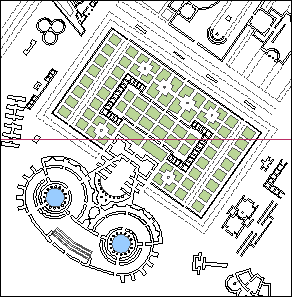
Horti Cn. Dolabellae - The Gardens of Dolabella
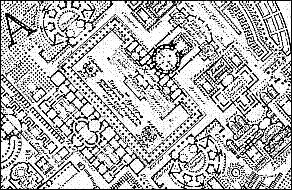
The Pantheon and the Baths of Agrippa
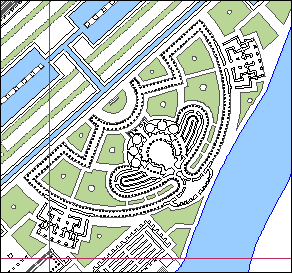
Aula Regia - A Royal Throne Room
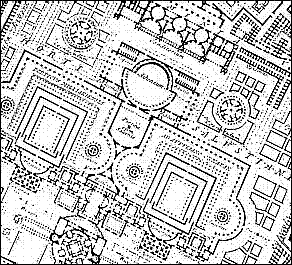
Horti Salustiani - The Gardens of Salustian
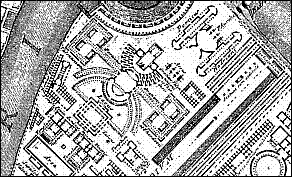
The Arch of Gratian, Valentinian, and Theodosius adjacent to the Porticus Gratiani
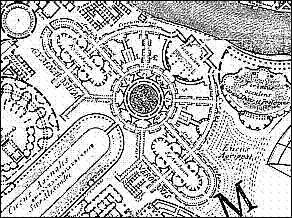
Gymnasium Neronis - The Gymnasium of Nero

The Theater of Pompey
|







